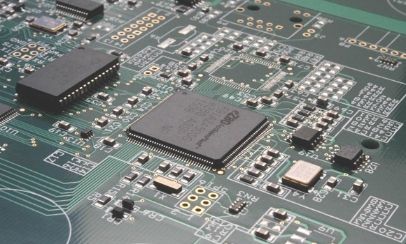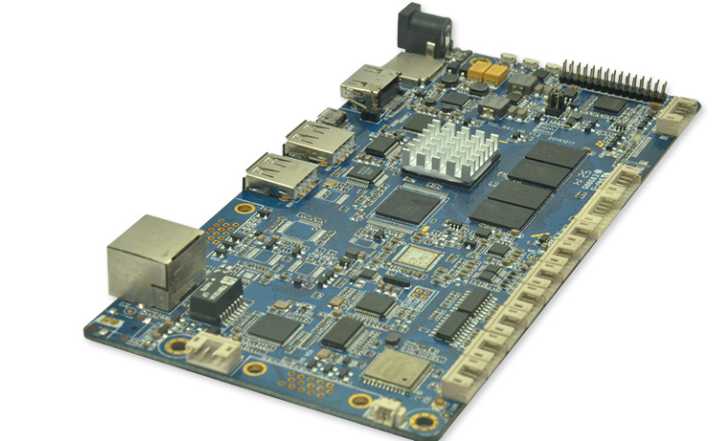
2019, the news of 5G will be heard constantly. Either carriers will start large-scale testing, or terminal manufacturers will release 5G phones. Recently, the official launch of 5G service for the public in South Korea has announced the opening of 5G commercial use. The commercial use of 5G will bring unlimited market opportunities to upstream and downstream industries. As a key interconnect component for the assembly of electronic parts, how will PCB (printed circuit board) share in the 5G market? Is the technical requirement of 5G on PCB unattainable? Whether the domestic PCB enterprises can take the opportunity of 5G to realize the curve overtaking?
5G will provide a huge market for PCBS
Known as the "mother of electronic products", PCB not only provides electrical connection for electronic components, but also carries the digital and analog signal transmission, power supply, radio frequency and microwave signal transmission and reception of electronic equipment and other business functions, the vast majority of electronic equipment and products need PCB circuit board.

It is understood that every 1 yuan PCB can support the development of 30 yuan terminal products. The 5G era provides a huge market and opportunity for PCB industry. It is estimated that the direct output economic benefits of 5G in 2020, 2025 and 2030 will be 484 billion yuan, 3.3 trillion yuan and 6.3 trillion yuan respectively, while the indirect output economic benefits will be 1.2 trillion yuan, 6.3 trillion yuan and 10.6 trillion yuan respectively.
5G, from the construction of communication networks, to terminals, and then to derivative application scenarios, will put forward a large demand for PCB. Yang Zhicheng, chairman of Shennan Circuit Co., LTD., told China Electronics News that PCB hardware will be used in 5G wireless base stations, bearer networks, transmission networks and core network hardware facilities, such as 5G radio frequency board, backboard, high-speed network board, server motherboard, microwave board, power board and so on. Zhai Dingshi, marketing manager of Shenzhen Chongda Circuit Technology Co., LTD., also said that with the upgrading of communication technology from 4G to 5G, the quantity and price of PCBS needed in communication base stations have risen. Due to the high-frequency microwave characteristics of 5G, the base station density is higher than that of 4G base stations. At the same time, the processing frequency, data transmission and processing speed of various devices are much higher than 4G era. These core master equipment, transmission equipment, antenna/RF equipment put a very high demand for high frequency and high speed board, the unit price is higher than 4G base station PCB. It is estimated that in a single base station, the PCB demand of 5G base station is twice that of 4G base station. In addition, 5G terminal devices, such as mobile phones and smartwatches, also need to be updated with communication technology, and the PCB demand for this part is much greater than the infrastructure part.
It is predicted that the total value of 4G Acer station PCB is about 5492 yuan. Global 4G base station PCB market space is about 5 billion yuan/year ~9 billion yuan/year, corresponding CCL (copper foil substrate) is about 1 billion yuan/year ~2 billion yuan/year. The PCB value of 5G Acer station is about 15,104 yuan/station. In the peak year, the PCB demand brought by the construction of 5G base station is about 21 billion yuan/year ~24 billion yuan/year, and the corresponding CCL market space is about 8 billion yuan.
5G requires an overall improvement in PCB technology
5G not only brings opportunities to PCB industry, but also puts forward higher and more stringent requirements for technology. Its indexes in speed, integration, heat dissipation, frequency and multilayer are much higher than 4G.
Yang told China Electronics News that full spectrum intervention, Massive MIMO (antenna array) and ultra-dense networks will be the technical core to realize 5G networks. Accordingly, the technical challenge to PCB is also put forward. First of all, the structure and function of the base station RF unit and antenna have undergone great changes, which are mainly manifested as the increase of the number of RF unit channels (from 8 channels to 64 channels) and the increase of the corresponding PCB area. The structure form of 4G base station equipment RRU plus antenna unit changes to 5G AAU structure (integrating RRU and antenna functions), and the corresponding PCB integration degree is higher. Secondly, in order to achieve ultra-dense network coverage, in addition to spectrum applications below 6GHz in 5G spectrum, millimeter wave spectrum resources such as 28G and 39G, which are used for hot spot coverage and large-capacity high-speed transmission, will be widely applied. Therefore, the demand for high-frequency PCB used by high-frequency microwave base stations will increase. Finally, under the network architecture of 5G independent networking, in order to meet the technical requirements of high-speed transmission, PCB required by baseband unit, mesh board, backplane, server and other data transmission equipment will use higher-grade high-speed copper-clad material. "These technical challenges require domestic PCB enterprises to grasp the trend of technology and market at all times and take the road of differentiation in order to build unique competitiveness." Yang Zhicheng said.
In addition, thermal management of PCB products may become particularly important in the future. "Not only is it suitable for high-frequency devices, but also the heat dissipation requirements due to high power and high power density. The application of new high thermal conductivity materials, special heat dissipation structural PCB needs will emerge." Chen Xingnong, chairman of Shenzhen Mutai Lai Circuit Technology Co., LTD., said, "Big data, cloud computing and other needs of the server is high level, high reliability of the multilayer board; New technologies such as the Internet of Things, intelligent manufacturing, autonomous driving and so on, there will be some special structure, special technical requirements of PCB demand, may use special materials, but may also be different from the traditional PCB special structure, or production accuracy requirements far beyond the general level of PCB."
In-depth understanding of customer needs to take the road of differentiation
With the rapid development of the electronic information industry, PCB industry continues to grow. The global output of PCB increased from more than $40 billion in 2008 to $60 billion in 2018. The share of China's PCB industry in the world has also changed dramatically, from less than 10% in 2000, to 30% in 2018, to more than 50% in 2018.

Yang Zhicheng told China Electronics News that in the past 10 years, the center of gravity of PCB industry has been shifting to Asia, and China has become the world's largest PCB industrial base. "Despite this, there is still a certain gap between domestic PCB companies and foreign companies in terms of technology level, especially high-end PCB board products. 5G is a rare opportunity. By seizing this opportunity, domestic PCB companies can catch up with and surpass international giants in terms of scale, technology and management." Zhai Dingshi told reporters.
In the "Printed Circuit Board Industry Specification Conditions" and the "Interim Measures for the Management of Printed Circuit Board Industry Specification Announcement" formulated by the Ministry of Industry and Information Technology, it is mentioned that PCB enterprises should be encouraged to strengthen the top-level design, promote the upgrade of automation equipment, promote the improvement of automation level, and integrate automation, information and intelligence into all aspects of design, production, management and service. Enterprises are encouraged to actively carry out intelligent manufacturing, reduce operating costs, shorten product production cycle and improve production efficiency. In 5G era, PCB enterprises should keep pace with The Times. "In R & D, production, management to improve the internal work, increase in product technology research and investment, constantly meet the new requirements of customers, products." Yang Zhicheng said.
Different from the contract manufacturing of standard products, PCB board is a customized product serving downstream customers. It is a highly "customized" product, which requires a deeper understanding of customer needs. Zhai said that 5G is a technology that develops and innovates from time to time. If it fails to keep up with customers' needs and conduct more thorough and detailed research on products, it will be difficult to progress with the market. He also stressed that technical communication with raw material companies should be strengthened, as many products in the 5G era have high requirements for raw materials and production processes, and only if China can establish a good raw material supply system can it steadily and quickly make bigger and stronger in the field of 5G PCB. Su Xinhong, deputy director of the PCB Research Institute of Zhuhai Founder Printed Circuit Board Development Co., LTD., said that companies making printed circuit boards for communication equipment need to study the application of high-speed materials, signal integrity and signal simulation. At the same time, it is necessary to study the high-speed material technology and upgrade the corresponding equipment, so as to meet the requirements of improving the machining accuracy of the circuit board.









